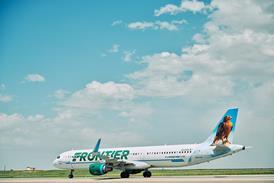Airbus is looking to use the A321XLR’s wing on earlier models of the A321neo, to improve performance and simplify its industrial system.
The long-range A321XLR – which entered service last year – features a number of aerodynamic changes including a single-slotted inboard flap design.
Airbus originally developed the A321 with double-slotted flaps because the longer fuselage over the A320 meant a need for increase lift capability at rotation.
Speaking during a technical briefing in Toulouse on 11 June, A320-family chief engineer Marc Guinot said the airframer is analysing a transfer of the XLR wing design to its predecessor variants.
He estimates that such a measure would be implemented before the end of this decade.

He says the change would result in a performance improvement, although measuring it “is a difficult art” because it depends on circumstances and conditions.
Guinot says the change could result in “better flying techniques” – in terms of commonality – between the XLR and other A321neos.
The XLR also has a large integrated rear centre tank to support the fuel demand for its long-range operations.
This tank design underwent revision to meet updated certification criteria, including the installation of a lining to reduce fuel-leak risk in the event of damage to the aft fuselage, perhaps during a gear-up landing.
But the tank reinforcement increased the weight by around 300kg, says Guinot, trimming the range by 50-70nm.
“We have a plan which is really about performance recovery,” he says.
Airbus has been looking at procedure tweaks but is also studying the feasibility of increasing the XLR’s maximum take-off weight – “slightly”, says Guinot – in order to retrieve lost range. The aircraft is currently certified with a maximum take-off weight of 101t.


























